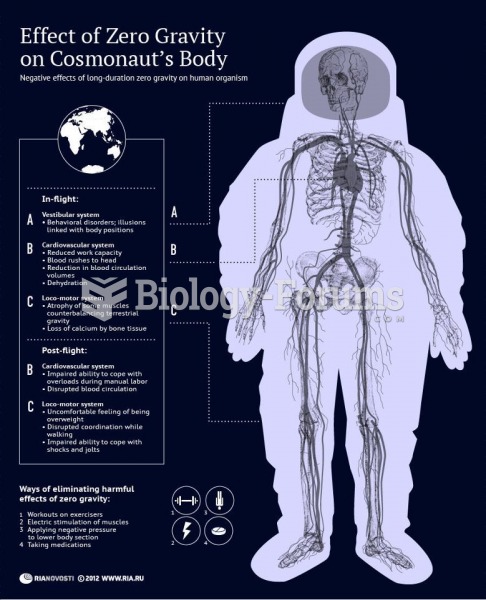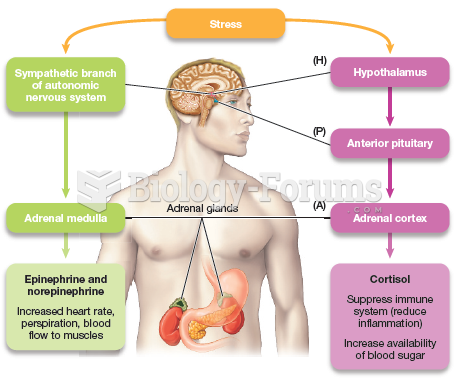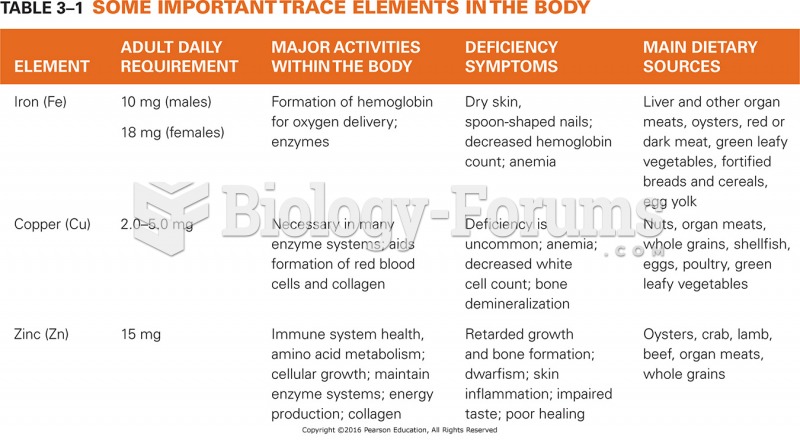|
|
|
Children with strabismus (crossed eyes) can be treated. They are not able to outgrow this condition on their own, but with help, it can be more easily corrected at a younger age. It is important for infants to have eye examinations as early as possible in their development and then another at age 2 years.
This year, an estimated 1.4 million Americans will have a new or recurrent heart attack.
Hyperthyroidism leads to an increased rate of metabolism and affects about 1% of women but only 0.1% of men. For most people, this increased metabolic rate causes the thyroid gland to become enlarged (known as a goiter).
Asthma cases in Americans are about 75% higher today than they were in 1980.
It is difficult to obtain enough calcium without consuming milk or other dairy foods.







